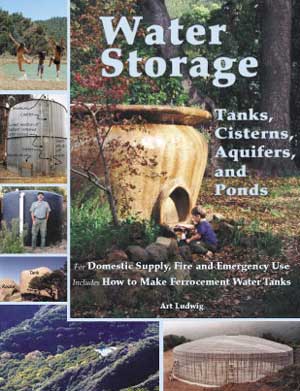
 3
3




 6
6




John Daley Bendigo, Australia The Enemy of progress is the hope of a perfect plan
Benefits of rainfall collection https://permies.com/t/88043/benefits-rainfall-collection
GOOD DEBT/ BAD DEBT https://permies.com/t/179218/mortgages-good-debt-bad-debt
 3
3




Invasive plants are Earth's way of insisting we notice her medicines. Stephen Herrod Buhner
Everyone learns what works by learning what doesn't work. Stephen Herrod Buhner
 4
4




 3
3




If there is one thing the Wizard of Oz has taught me, it is not to trust school teachers on bicycles.
 1
1




If there is one thing the Wizard of Oz has taught me, it is not to trust school teachers on bicycles.
 4
4




 10
10




"You must be the change you want to see in the world." "First they ignore you, then they laugh at you, then they fight you, then you win." --Mahatma Gandhi
"Preach the Gospel always, and if necessary, use words." --Francis of Assisi.
"Family farms work when the whole family works the farm." -- Adam Klaus
 6
6




I'm mostly trying to determine if it's feasible for us to make a rainwater-only homestead work within our anticipated budget.
John Daley Bendigo, Australia The Enemy of progress is the hope of a perfect plan
Benefits of rainfall collection https://permies.com/t/88043/benefits-rainfall-collection
GOOD DEBT/ BAD DEBT https://permies.com/t/179218/mortgages-good-debt-bad-debt
 2
2




R Scott wrote:Every time I’ve run the numbers for lowest life time cost (20-30 years minimum) the winner has been a basic agricultural pole barn. Greenhouses or shade structures are cheaper up front but replacing the plastic adds up over time.
It really depends on what else you need that you can “share the cost” with. If you plan to grow a lot of stuff that needs shade, the shade structure probably makes the most sense. If you need a shop or barn or secure storage, the barn probably wins.
I do know someone that built a HUGE pole barn roof with no sides and then parked an rv in it while they built a straw bale house under another corner. It didn’t stop the wind but provided the only shade on the property plus a place to store stuff and work during the rainy season.
 3
3




"You must be the change you want to see in the world." "First they ignore you, then they laugh at you, then they fight you, then you win." --Mahatma Gandhi
"Preach the Gospel always, and if necessary, use words." --Francis of Assisi.
"Family farms work when the whole family works the farm." -- Adam Klaus
 7
7




What I'm trying to figure out is what type of structures, and what materials, would lend themselves to large permanent catchment surfaces for the least $$ / sq ft. ?
sow…reap…compost…repeat
 3
3




John Daley Bendigo, Australia The Enemy of progress is the hope of a perfect plan
Benefits of rainfall collection https://permies.com/t/88043/benefits-rainfall-collection
GOOD DEBT/ BAD DEBT https://permies.com/t/179218/mortgages-good-debt-bad-debt
 1
1





 2
2







Be joyful, though you have considered all the facts. ~Wendell Berry
 2
2




pax amor et lepos in iocando










 1
1





Be joyful, though you have considered all the facts. ~Wendell Berry




John Daley Bendigo, Australia The Enemy of progress is the hope of a perfect plan
Benefits of rainfall collection https://permies.com/t/88043/benefits-rainfall-collection
GOOD DEBT/ BAD DEBT https://permies.com/t/179218/mortgages-good-debt-bad-debt
 1
1




Jason Nault, Washington, USA
Check out my rainwater catch and automated garden build at https://permies.com/t/168563/Building-rainwater-catch-system-irrigation
 2
2




John Daley Bendigo, Australia The Enemy of progress is the hope of a perfect plan
Benefits of rainfall collection https://permies.com/t/88043/benefits-rainfall-collection
GOOD DEBT/ BAD DEBT https://permies.com/t/179218/mortgages-good-debt-bad-debt

|
Are you here to take over the surface world? Because this tiny ad will stop you!
The new kickstarter is now live!
https://www.kickstarter.com/projects/paulwheaton/garden-cards
|





